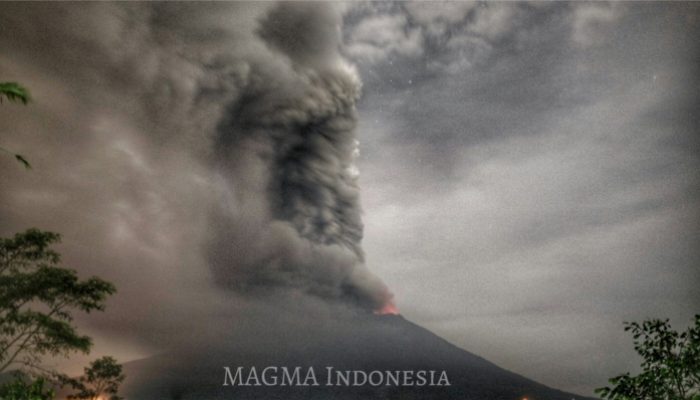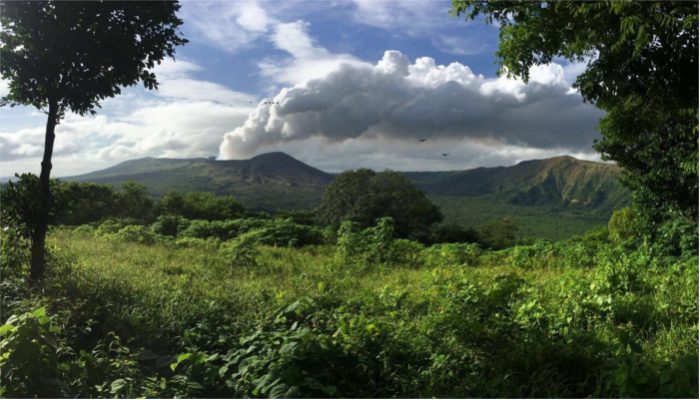What controls how violently a volcano erupts? Stratovolcanoes like Mount St Helens (USA), Gunung Merapi (Indonesia), or Volcán de Colima (Mexico) tend to erupt in two distinct ways: effusively and/or explosively. Effusive eruptions are eruptions where lava is extruded without any major explosions. Although effusive eruptions can be dangerous, at stratovolcanoes they tend to be restricted to volcan ...[Read More]
Update on the Agung volcanic eruption in Indonesia
Since our last blog, Agung has had two months to reflect and has recently begun a strong ash venting process, with incandescence visible at night in the summit. Updates from Magma Indonesia, the official communications hub for natural hazards in Indonesia, have highlighted an elevated level of volcanic tremor and an evacuation zone to 12 km radius around the volcano is being enforced. You can foll ...[Read More]
Ongoing unrest at Agung Volcano, Indonesia
Agung volcano, a 3.1 km high cone located in the east of Bali, Indonesia, which last erupted in 1963 killing ~1500 people (Self and Rampino, 2012), is currently undergoing seismic unrest, and steam/gas emissions have been observed at the surface. This has led the Indonesian authorities to evacuate areas around Agung which could be affected by volcanic hazards, leading to the displacement of over 7 ...[Read More]
Unseen but not unfelt: resilience to persistent volcanic emissions
The last decade has been inundated with reports of environmental disasters impacting the lives of billions of people around the world. While news coverage of floods, hurricanes, earthquakes or wild fires are always accompanied with spectacular images of destruction that emphasise the speed at which they strike, a myriad of slow and latent hazards have been left in the shadow of the public attenti ...[Read More]




